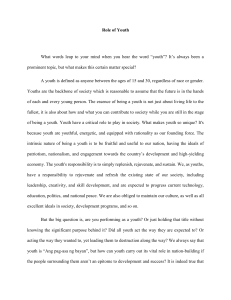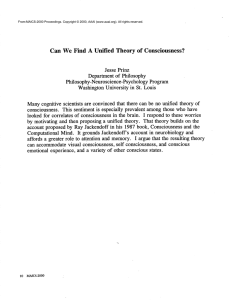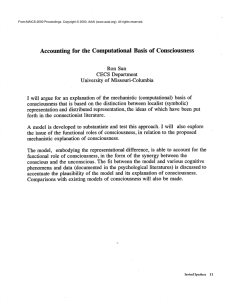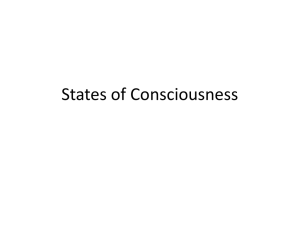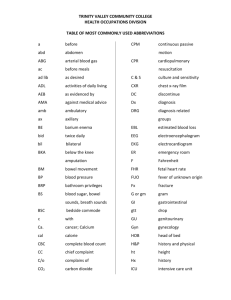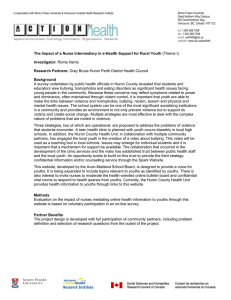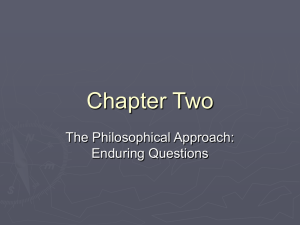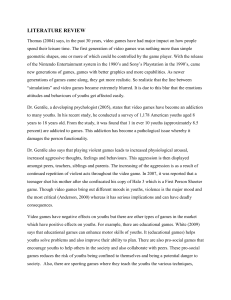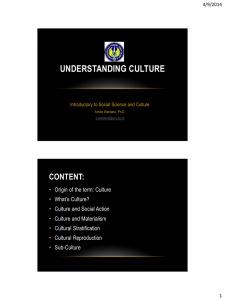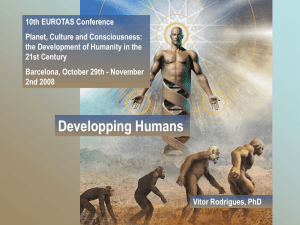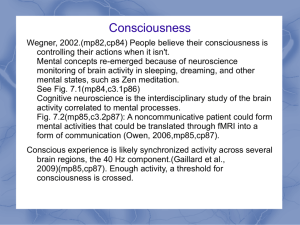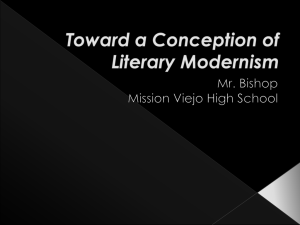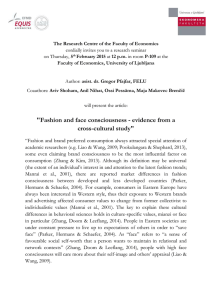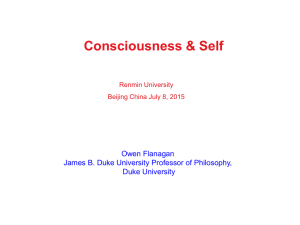The Prospect for the Future Society through the Comparison of
advertisement
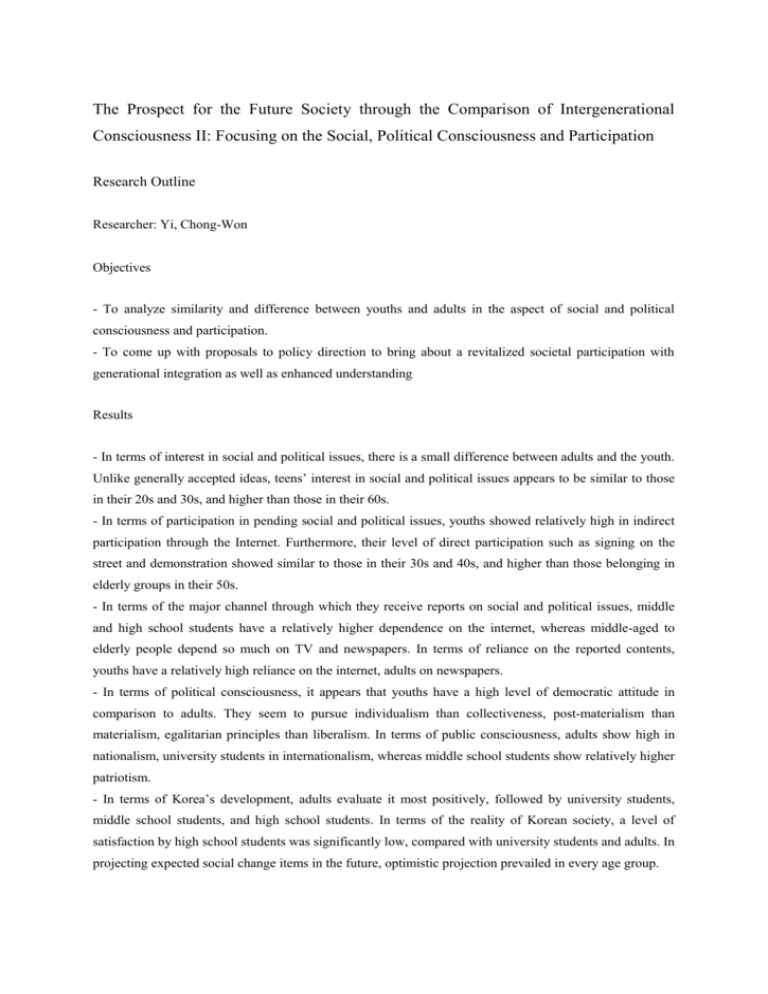
The Prospect for the Future Society through the Comparison of Intergenerational Consciousness II: Focusing on the Social, Political Consciousness and Participation Research Outline Researcher: Yi, Chong-Won Objectives - To analyze similarity and difference between youths and adults in the aspect of social and political consciousness and participation. - To come up with proposals to policy direction to bring about a revitalized societal participation with generational integration as well as enhanced understanding Results - In terms of interest in social and political issues, there is a small difference between adults and the youth. Unlike generally accepted ideas, teens’ interest in social and political issues appears to be similar to those in their 20s and 30s, and higher than those in their 60s. - In terms of participation in pending social and political issues, youths showed relatively high in indirect participation through the Internet. Furthermore, their level of direct participation such as signing on the street and demonstration showed similar to those in their 30s and 40s, and higher than those belonging in elderly groups in their 50s. - In terms of the major channel through which they receive reports on social and political issues, middle and high school students have a relatively higher dependence on the internet, whereas middle-aged to elderly people depend so much on TV and newspapers. In terms of reliance on the reported contents, youths have a relatively high reliance on the internet, adults on newspapers. - In terms of political consciousness, it appears that youths have a high level of democratic attitude in comparison to adults. They seem to pursue individualism than collectiveness, post-materialism than materialism, egalitarian principles than liberalism. In terms of public consciousness, adults show high in nationalism, university students in internationalism, whereas middle school students show relatively higher patriotism. - In terms of Korea’s development, adults evaluate it most positively, followed by university students, middle school students, and high school students. In terms of the reality of Korean society, a level of satisfaction by high school students was significantly low, compared with university students and adults. In projecting expected social change items in the future, optimistic projection prevailed in every age group.
